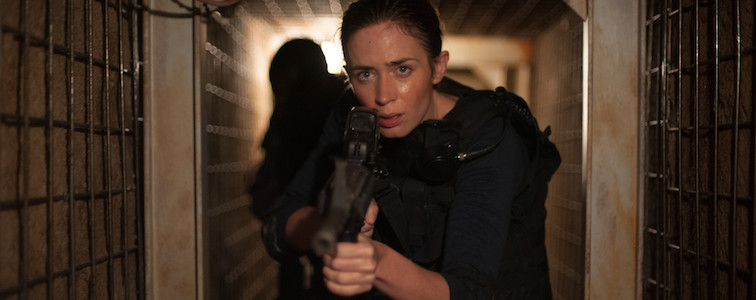
‘Sicario’ covers conventional theme in familiar manner
By Bob Bloom
“Sicario” is a pretentious drama that screams IMPORTANT to the viewer, and re-emphasizes its point by having it tattooed on its cinematic forehead.
The movie is an examination of the drug war in which U S. and Mexican authorities battle to defeat the cartels and stem the flow of drugs from across the border into the United States.
The feature’s big message — the fight is almost an exercise in futility — as if those of us who keep up on the news didn’t already know that.
“Sicario’s” other big meaning — to kill a monster, one must become a
monster. Or, to paraphrase cartoonist Walt Kelly from his famed “Pogo” strip: We have met the enemy, and it is us.
The film focuses on Kate Macer (Emily Blunt), an idealistic FBI agent who is recruited for an elite interagency task force to aid in the escalating war against the drug trade.
Kate soon learns that those she works with, including Matt (Josh Brolin) and Alejandro (Benicio Del Toro), are as ruthless and deadly as the enemies they battle to take down.
Matt and Alejandro have no qualms about engaging their targets with extreme prejudice or using torture to elicit information. Kate soon realizes they are quite casual and at ease with their illegal methods.
The problem with “Sicario,” directed by Denis Villeneuve — who helmed the acclaimed and dark drama “Prisoners” — is that it doesn’t tell us anything we don’t already know about the war on drugs.
We know people become morally and ethically compromised to serve the better good; we realize that sometimes the good guys must overstep their bounds to neutralize the bad guys.
The manner in which screenwriter Taylor Sheridan has structured the story and developed the role of Kate makes her seem like a naive rookie rather than a seasoned federal law officer.
Neither the movie nor the character serves the talented Blunt with much respect.
Kate is angered and disillusioned by what she sees and realizes too late that she was placed on the task force as window dressing, allowing Matt and Alejandro, who have other agendas, to battle the cartels on their home turf, despite laws in the United States that forbid them to do so.
The movie’s grim tone is slightly alleviated by the phenomenal cinematography of Roger Deakins. His aerial shots of desolate stretches of land near the U.S.-Mexican border look like alien landscapes, making it easy to understand how drug smugglers and human traffickers can so easily evade authorities.
Also, he uses a documentary, cinema-verite style of camera work for scenes involving firefights between the task force and cartel members, putting the audience in the midst of the action.
Sheridan and Villeneuve try to create a hybrid of “Traffic” and “Zero Dark Thirty,” but the film turns out more as a distant cousin.
The movie’s title is a Mexican word for “hitman.” Early on, you can figure out who that character is, but, again, Sheridan and Villeneuve, try to surprise us with his identity — to no avail.
“Sicario” is a solid movie, but it adds nothing new or different from any of the other dozen films that have dealt with this topic.
It’s a brutal and violent depiction of a very familiar subject.
Bloom is a member of the Indiana Film Journalists Association. His reviews appear at ReelBob (reelbob.com) and The Film Yap (filmyap.com). He also reviews Blu-rays and DVDs. He can be reached by email at bobbloomjc@gmail.com or on Twitter @ReelBobBloom. Other reviews by Bloom can be found at Rottentomatoes: www.rottentomatoes.com.
SICARIO
2½ stars out of 4
(R), graphic and bloody violence, language, disturbing images
